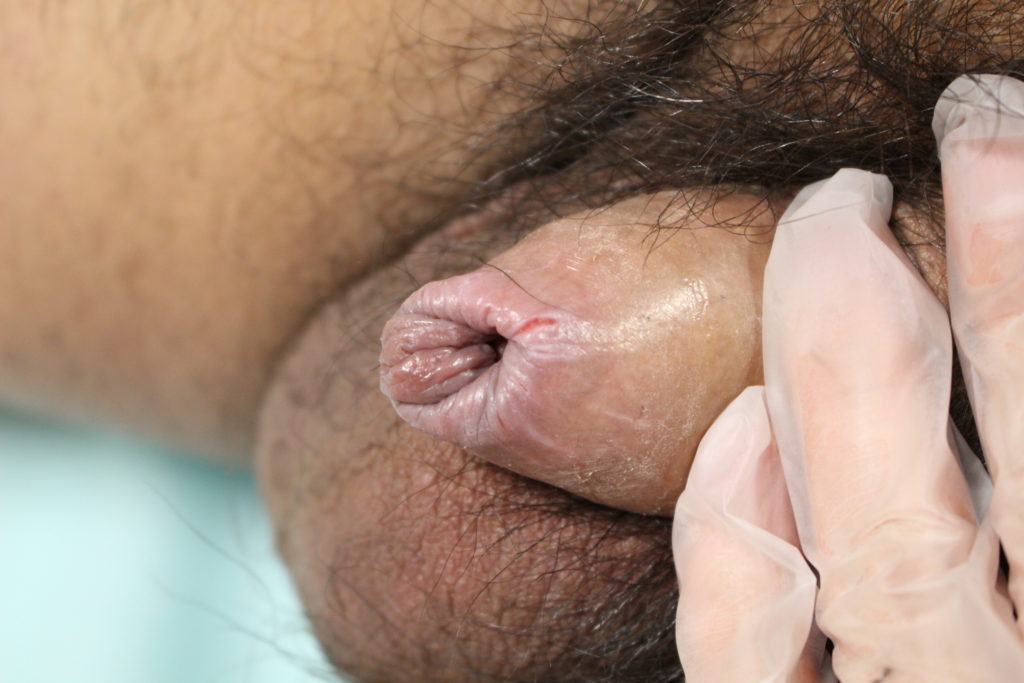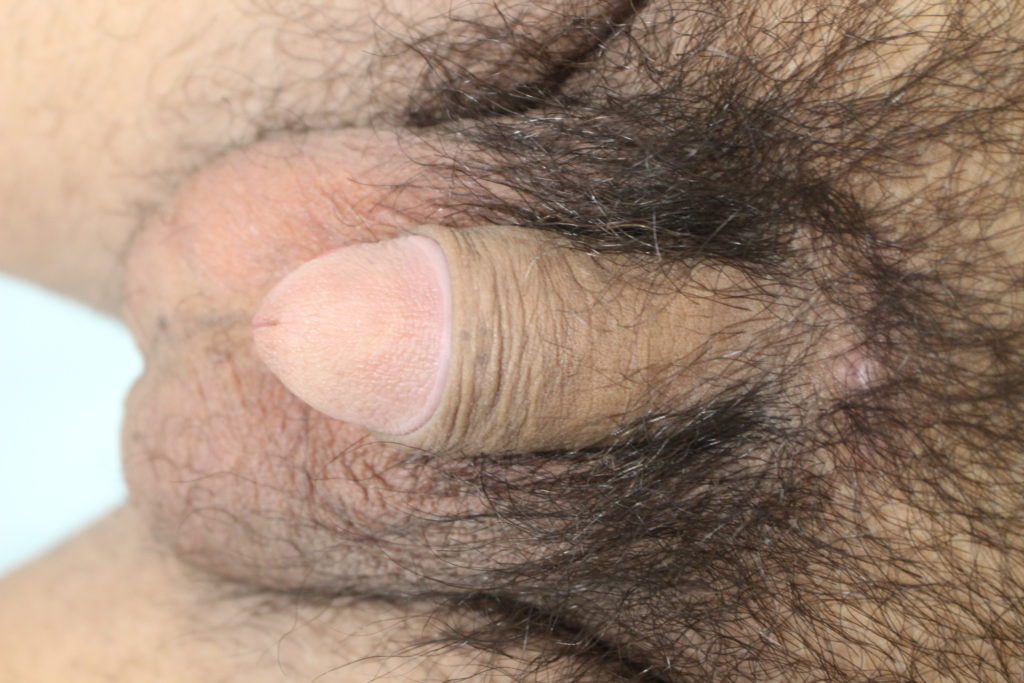Diabetic Phimosis: What it is
In recent years, there has been a growing trend of individuals in Japan developing diabetes or being at a pre-diabetic stage. Diabetes can lead to various complications, making its increase a societal issue.
Diabetes can also affect the condition of phimosis, leading to diabetic phimosis, where the excess foreskin tightens, eventually making it impossible to retract. The prevalence of this condition is increasing.

In this article, we will introduce a case of diabetic phimosis in a 40-year-old diabetic patient (170 cm, weighing over 100 kg). His HbA1c (Hemoglobin A1c) level was 6.3. About a month before seeking consultation, the patient noticed the tip of his foreskin becoming tight and cracking, eventually leading to an inability to retract it (refer to the image above). Attempting to force it back would cause further cracking at the tip and pain, to the point where the patient was unable to wash his penis during a shower. Of course, engaging in normal sexual activity was also impossible.
In such a condition, it is unlikely that the tightness will improve on its own. The penis becomes dirty from urine and sweat and cannot be cleaned, leading to worsening inflammation and further tightening – a vicious cycle.
For such cases, the treatment procedure is generally the same as for true phimosis. However, compared to regular cases of true phimosis, diabetic phimosis is characterized by (1) thicker skin at the tip, and (2) very strong tightening. The first step in treatment is to remove the tightness and widen the ring at the tip to allow the glans to be exposed. In some cases, the inside of the foreskin and the glans may have adhered together, forming an "adhesion." In such cases, adhesion dissection is performed to separate the glans and foreskin and shape the glans. After that, we measure the difference in length between the flaccid and erect states, and the stretchability of the skin, before removing the skin and tight areas and suturing directly under the glans.
There are few surgeons who can perform the "glans burying method" for true phimosis and diabetic phimosis, requiring considerable experience and skill. Our clinic is capable of beautifully finishing such phimosis conditions using the glans burying method, so you can rest assured and leave it to us.

The image above shows the condition three months post-surgery. You can see that the inflammation of the glans, which was inflamed immediately after surgery, has subsided, and it has returned to a normal color once exposed. The patient is now able to shower and bathe without pain, maintaining a clean condition, and can engage in normal sexual activity, much to his delight.
There are many individuals suffering from diabetic phimosis or feeling uneasy about it. Please feel free to consult with our specialized clinic. When you do, please inform us of your HbA1c level, blood sugar level, medication status, and the types of medication you are taking. It would be helpful if you could bring your medication booklet and the latest test results from the hospital where you are being treated. We look forward to your consultation.